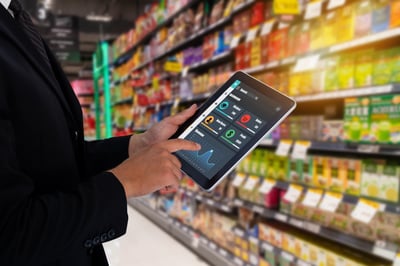
The culmination of the holiday season doesn't mark the end of challenges for retail leaders. Beyond the festive rush lies a critical phase requiring strategic planning. Strategic pricing can help navigate post-holiday supply chain challenges and plays a pivotal role in an overarching supply-chain triage strategy.
The Importance of Pricing Strategies
As retail leaders shift their focus from holiday festivities to post-holiday operations, they understand the significance of well-crafted pricing strategies. The initial weeks of the new year often bring supply chain fluctuations, posing logistical challenges. This is where pricing strategies emerge as a crucial tool for maintaining equilibrium.
Pricing strategies can alleviate post-holiday supply chain challenges by strategically influencing consumer demand. Products with higher inventory levels can be highlighted through adjusted pricing, diverting demand away from products with limited availability. This active pricing approach becomes a game-changer in navigating the 'lumpy' supply chains that typically follow the holiday rush.
However, viewing these pricing decisions as integral components of a larger supply-chain triage strategy is essential. In this context, supply-chain triage involves swift decision-making and resource management within the supply chain to minimize disruptions and optimize overall performance.
Supply-Chain Triage Explained
Supply-chain triage is a strategic approach that enables businesses to prioritize and manage their resources efficiently, leading to maximum productivity and success. Its game-changing impact lies in identifying critical tasks that demand immediate attention.
 Categorizing tasks based on urgency and importance allows retail leaders to allocate resources effectively, minimizing delays and maximizing productivity. Beyond this, supply-chain triage provides a structured framework for managing unexpected disruptions or fluctuations within the supply chain. This ensures swift and effective responses by reallocating resources as required, minimizing the impact on operations.
Categorizing tasks based on urgency and importance allows retail leaders to allocate resources effectively, minimizing delays and maximizing productivity. Beyond this, supply-chain triage provides a structured framework for managing unexpected disruptions or fluctuations within the supply chain. This ensures swift and effective responses by reallocating resources as required, minimizing the impact on operations.
Post-holiday success in the retail industry involves more than analyzing pricing and promotions.
Implementing a supply-chain triage system empowers businesses with a practical decision-making approach, allowing teams to seamlessly shift consumers towards products with ample inventory while reducing demand for those in limited supply.
Harnessing Supply-Chain Triage
Supply chain triage involves a rapid and strategic response to unforeseen disruptions within the supply chain. Its goal is to minimize the impact of these disruptions and optimize overall performance by making swift decisions and efficiently managing resources. A responsive and adaptable supply chain ensures that retailers can quickly adjust to changing market demands or unexpected disruptions while minimizing costs associated with excess inventory or stockouts. Retail leaders should consider three primary areas of interest when considering tools that can aid in implementing a supply chain triage system within their company.
Ability to Manage Disruptions
Managing disruptions in the supply chain is crucial during the post-holiday season when unexpected events like weather-related issues or transportation problems can occur. These disruptions can lead to delays and shortages, affecting customer satisfaction and overall business operations. To successfully navigate this challenge, retail teams need accurate data analysis and forecasting tools that help identify which areas are most at risk of stockouts to preemptively target items for markdowns and establish effective clearance strategies that can go into effect in case such disruptions occur with little forewarning.
Effectiveness at Optimizing Performance
 Supply-chain triage focuses on optimizing overall performance by streamlining processes and improving communication. This optimization is vital for post-holiday retail operations, ensuring the supply chain is responsive and adaptable to changes.
Supply-chain triage focuses on optimizing overall performance by streamlining processes and improving communication. This optimization is vital for post-holiday retail operations, ensuring the supply chain is responsive and adaptable to changes.
Streamlining processes involves identifying bottlenecks and inefficiencies within the supply chain and implementing strategies to eliminate them. Software solutions that are multifaceted and incorporate multiple tools in a single platform are considered to be “best practices” in streamlining processes as they make cross-referencing a smoother process and reduce the possibility of human error due to manual input of information, saving time and resources.
Improving communication is another critical aspect of optimizing performance. Effective communication between stakeholders in the supply chain, such as CPG suppliers, manufacturers, distributors, and retailers, ensures that all teams involved are on the same page regarding inventory levels, production schedules, delivery timelines, and any changes or disruptions.
Retail Execution and Store Tasking Capabilities
 Supply-chain triage is pivotal in post-holiday retail operations by facilitating swift decision-making and efficient resource management. It ensures that retail teams can effectively manage inventory, respond to demand fluctuations, and maintain a high level of performance in merchandising and retail execution.
Supply-chain triage is pivotal in post-holiday retail operations by facilitating swift decision-making and efficient resource management. It ensures that retail teams can effectively manage inventory, respond to demand fluctuations, and maintain a high level of performance in merchandising and retail execution.
An effective supply-chain triage solution incorporates retail execution and store tasking to ensure that the products are strategically placed, displays are updated, and store shelves are stocked appropriately. These elements are vital to maintaining customer satisfaction and maximizing sales. Investing in solutions such as automated inventory management systems or utilizing AI-powered analytics tools can further enhance efficiency in these areas and, ultimately, ensure that customers find what they need when they visit a store while driving revenue growth for retailers.



